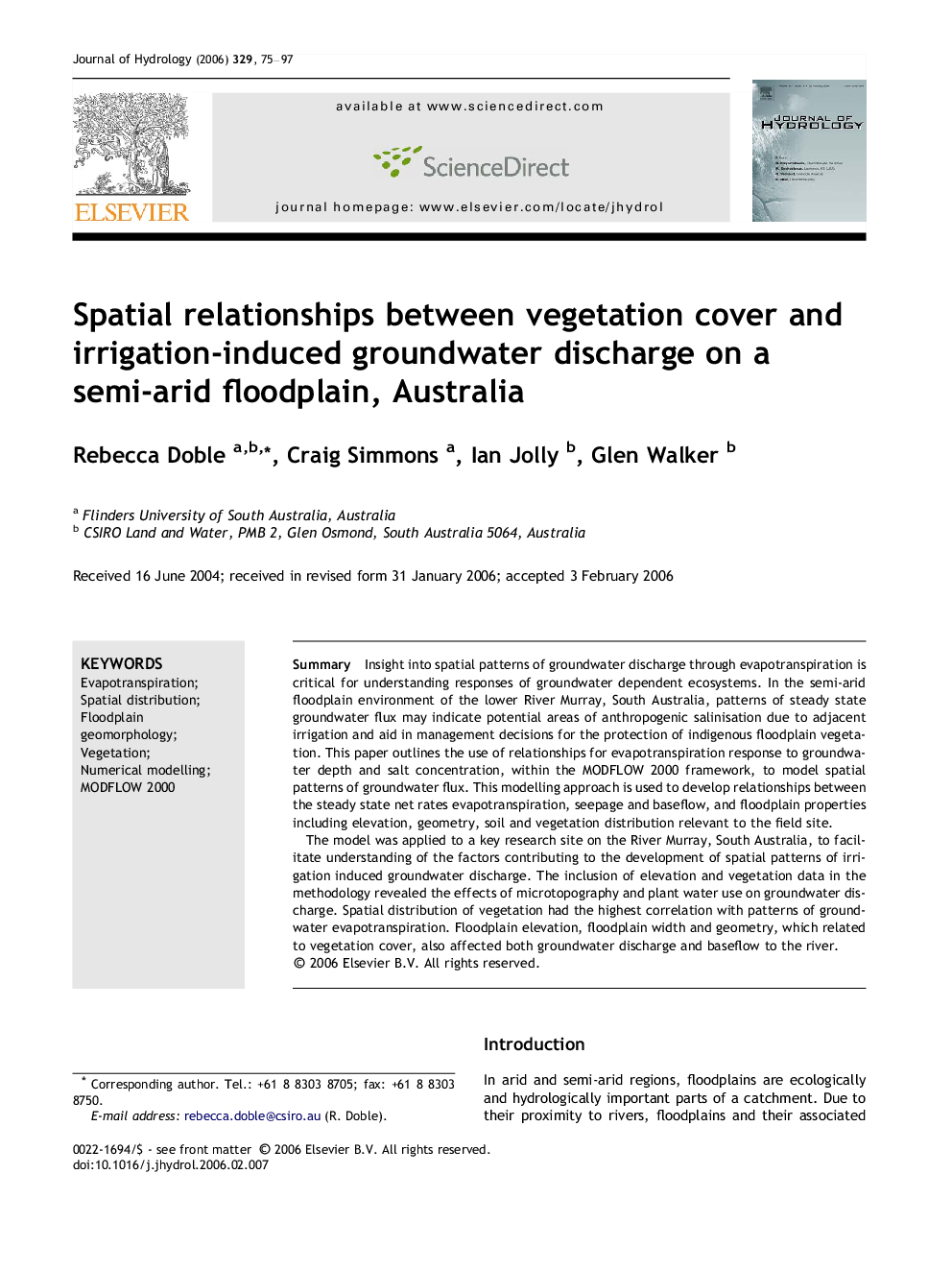| Article ID | Journal | Published Year | Pages | File Type |
|---|---|---|---|---|
| 4580225 | Journal of Hydrology | 2006 | 23 Pages |
SummaryInsight into spatial patterns of groundwater discharge through evapotranspiration is critical for understanding responses of groundwater dependent ecosystems. In the semi-arid floodplain environment of the lower River Murray, South Australia, patterns of steady state groundwater flux may indicate potential areas of anthropogenic salinisation due to adjacent irrigation and aid in management decisions for the protection of indigenous floodplain vegetation. This paper within the MODFLOW 2000 framework relationships for evapotranspiration response to groundwater depth and salt concentration, outlines the use of, to model spatial patterns of groundwater flux. This modelling approach is used to develop relationships between the steady state net rates evapotranspiration, seepage and baseflow, and floodplain properties including elevation, geometry, soil and vegetation distribution relevant to the field site.The model was applied to a key research site on the River Murray, South Australia, to facilitate understanding of the factors contributing to the development of spatial patterns of irrigation induced groundwater discharge. The inclusion of elevation and vegetation data in the methodology revealed the effects of microtopography and plant water use on groundwater discharge. Spatial distribution of vegetation had the highest correlation with patterns of groundwater evapotranspiration. Floodplain elevation, floodplain width and geometry, which related to vegetation cover, also affected both groundwater discharge and baseflow to the river.
